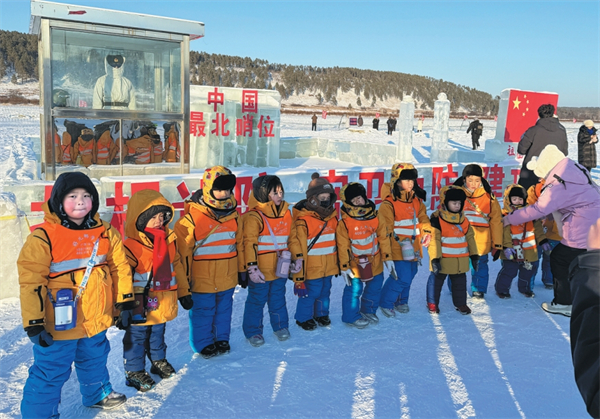Home>Harbin Today
Ice and snow festival to light up Harbin
Updated : 2017-12-21
By Yang Min ( chinadaily.com.cn )

A press conference on the 34th Harbin International Ice and Snow Festival is held by the government of Harbin on Dec 20.[Photo/people.cn]
The 34th Harbin International Ice and Snow Sculpture Festival will begin in Harbin, the capital of Northeast China's Heilongjiang province, on Jan 5, according to a government announcement at a news conference in the city on Dec 20.
The festival will last to the end of February when the ice starts to melt.
Under the theme “Harbin: Pearl on the Ice and Snow Crown", a variety of activities about ice and snow and relating to tourism, culture, fashion, the economy, trade and sports will welcome tourists from around the world.
People can have fun at the main venues such as the Sun Island Scenic Area, Ice and Snow World, Zhaolin Park and Central Street, as well as tourist attractions in the city that include St Sophia Church, Harbin Polarland and the Songhua River.
Originated from the Ice Lantern Show in 1985, the Harbin ice festival has become one of the world's four largest ice and snow festivals, along with the Sapporo Snow Festival in Japan, the Quebec Winter Carnival in Canada and Norway's Ski Festival.
This year’s festival will feature new mass participation by Harbin residents. Activities such as snowman creation contests, and ice and snow sculpture competitions will add new winter fun.
Harbin’s bitter winter, which lasts 120 days, used to be an obstacle to the city's development. However, Harbin has taken measures to turn the cold, snowy season into a rich resource to boost its economy, which has slowed in recent years amid China’s economic restructuring.
Statistics from the Harbin government reveal that the city welcomed over 18.5 million tourists during the 33rd snow and ice festival, achieving tourism revenue of 28.67 billion yuan ($4.35 billion). During last year’s Chinese Spring Festival holidays, Harbin hsawthe arrival of 910,000 tourists, generating revenue of 2.16 billion yuan, a record for the city’s winter tourism.

Harbin ramps up childcare services
A new comprehensive service center for childcare in Harbin is expected to be finished by the end of the year.
-
Talent policies drive enterprise development in Harbin
Harbin's "30 New Talent Policies" represents an iterative upgrade to the talent policy system, helping attract and retain talent to bolster economic and social development.
-
Official website of 2025 Asian Winter Games goes live
Harbin, the host city of the 9th Asian Winter Games, has announced that the official website for the 2025 event has recently gone live.
-
Harbin launches measures to facilitate more foreign trade
In the first three quarters of 2023, the total import and export value of Heilongjiang province's goods trade hit 218.22 billion yuan.





